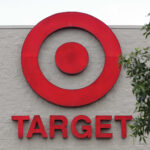Florida businesses appear to have suffered a significant portion of the overall damage from Hurricane Charley, according to the Property Casualty Insurers Association of America (PCI).
Wednesday’s estimate by the Property Claims Services unit of ISO that commercial claims will make up 40 percent of the $6.8 billion in insured losses is reportedly a much larger percentage than initially expected and emphasizes the need for businesses to undertake a careful review of their commercial insurance policies.
“Many of the businesses in the storm’s path had to shut down due to the widespread power outages,” Donald Griffin, PCI’s vice president of commercial lines, said. “The standard commercial insurance policy does not cover losses due to ‘off-site’ power outages and typically, business interruption coverage does not cover external power outages. Fortunately, insurers do offer optional business interruption coverage that will cover certain losses in the event of a power outage.
“For instance, a company that has refrigerated storage may want to buy additional protection to specifically cover the loss of the stored contents in the event their operations are interrupted by a power outage. Commercial insurers typically work closely with a company to understand their business and assess their risks and they work with the management to help them make informed decisions on what kind of coverage they want and need. In the end, it always comes down to choice, and some companies buy the minimum coverage while others insist on the Rolls Royce version.”
Griffin said catastrophes like Hurricane Charley always raise questions about insurance coverage. Some of the things business owners need to know about basic business coverage include:
· A standard business policy typically covers loss to the building, fixtures, and permanently installed machinery and equipment. It also covers furniture and fixtures, stock and one’s interest in “improvements and betterments” if the property is leased. It also covers property in one’s care, custody and control under certain conditions.
· Some items not covered typically include foundations of buildings (below ground level), land, bulkheads, pilings, piers, wharves or docks (although this coverage can be purchased separately) and vehicles (usually these are insured on another policy).
· Business policies also typically include coverage for debris removal. This is usually part of the policy limit; however, additional coverage is available. For buildings that are insured for replacement cost, the typical policy also includes up to $10,000 or 5 percent of the limit for the building (whichever is less) for the increased cost of construction due to building ordinance or law changes.
· A business policy may also include a “coinsurance” clause that requires the policyholder to insure the property for at least XX percentage (usually a minimum of 80 percent) of the value of the property. If, at the time of loss, the amount of insurance does not meet the minimum, the policyholder becomes a “co-insurer” and will bear a portion of the loss, beyond the deductible.
· A standard business interruption policy does not typically cover lost wages for employees. Some companies may buy policies that cover wages for certain employees to help them keep key employees while the company recovers.
· A business interruption policy may cover lost income, which should not be confused with lost revenue. If a company is out of business for 30 days and would have had $1 million in revenue during that period, the policy will provide for their typical income on that revenue. For instance, if they typically had 10 percent income based on $1 million in revenues, the policy would cover $100,000.
Was this article valuable?
Here are more articles you may enjoy.

 Target Must Face Shareholder Lawsuit Over Pride Backlash, US Judge Rules
Target Must Face Shareholder Lawsuit Over Pride Backlash, US Judge Rules  Baltic Sea Countries to Check Insurance on Tankers Moving Russian Oil
Baltic Sea Countries to Check Insurance on Tankers Moving Russian Oil  Consulting Firm McKinsey to Pay $650M to Resolve Criminal Opioid Probe
Consulting Firm McKinsey to Pay $650M to Resolve Criminal Opioid Probe  Coming Soon to Florida: New State-Fed Program to Elevate Homes in Flood Zones
Coming Soon to Florida: New State-Fed Program to Elevate Homes in Flood Zones 